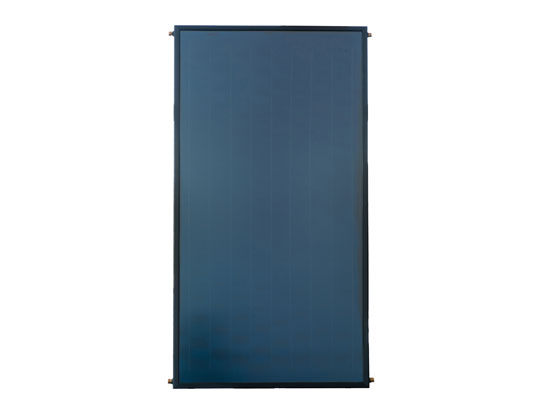Solar Systems:
Frequency Asked Questions
Q. What is a solar collector?
A. A solar collector is the “panel” that converts solar energy into heat.
Evacuated Tubes

Flate Plate

Q. How does a solar panel work?
A. The sun’s rays are absorbed by a special material, and this material becomes hot as a result. This heat is then pumped to your hot water cylinder etc. Solar panels will even work on overcast days, because a large portion of solar radiation is not blocked by cloud cover.
Q. How much hot water will I get from solar energy?
A. You will get approximately 60% of your hot water over a yearly period from solar.
Q. What is the difference between flat plat and tube panels?
A. Tube panels are approximately 20% more efficient than flat plate panels per m2 of aperture area. (Aperture area = area of solar collector that produces heat).
Q. Where do I mount my solar panels?
A. Panels are generally mounted on your roof, either flush with your tiles / slates (integrated), or indeed above the tiles or slates (on-roof). Larger collector arrays can be ground mounted on tailor-made brackets if necessary.
Q. In what direction should my solar panels be facing?
A. Your solar panels should face south or as close as possible to south, and should be inclined at approximately 45 degrees.
Q. How long will my panels last for?
A. Solar panels should have a lifespan of approximately 30 years.
Q. What is inside the solar panels and pipes?
A. The liquid that flows around the solar panels and pipework is a mixture of water and anti-freeze.
Q. I’ve got large amounts of plastic plumbing pipe lying around. Can I use this to connect to my solar panels?
A. No! You must not use plastic pipe on a solar installation!! The pressures and temperatures that can be reached are far too extreme for plastic piping. Use flexible stainless steel piping, or copper piping.
Q. What happens when we are not at home, there is no hot water being used, and the sun is shining for long periods, where does the heat go?
A. It is important to ensure that the expansion vessel is sized sufficiently large enough to cope with this possibility.
Q. Do I need to use a backup heat source when I am using solar heating?
A. You do need to use a backup heat source with solar. Generally you can use a “twin” or “dual” coil cylinder to produce hot water. The twin coil cylinder has two coils, one for solar and one for the other heat source (boiler or heat pump etc). In this way, if the solar panels cannot produce enough heat, the primary heat source will make up the shortfall.
Q. Can I use solar to help heat my house?
A. Yes, you can increase the amount of solar panels being used, in order to provide backup for heating and hot water for your house. A large storage cylinder is usually used, and the main heat source in conjunction with the solar, will heat this cylinder. The water in this cylinder is then used to heat the house and the hot water. This system will approximately be twice the cost of a solar domestic water system.
Q. Can I put the water from the solar panels directly into the heating system?
A. No, the temperatures and pressures are too extreme to be used directly in the heating system. Correct design will ensure that a heat exchanger is used, along with a large storage cylinder as mentioned in the above point. A heat exchanger is a device that transfers heat from one liquid to another, without the liquids touching.
Q. Do I need planning permission to put solar panels on my roof?
A. Solar installations which conform to the exemptions listed in Statutory Instrument 83 (SI No 83) do not need planning exemptions. Otherwise you will need to contact your local agency / planning authority, and they will advise you as to whether or not you will require planning permission for a solar installation in your particular area.
